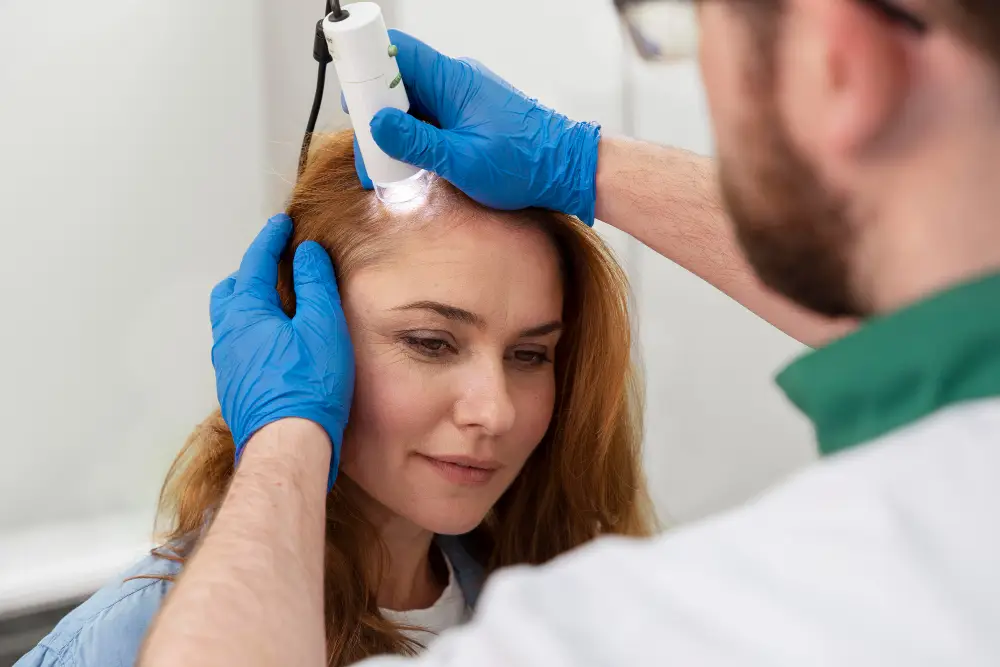
Autologous Adipose Derived Stem Cell Treatment for Knee Arthritis: A Comprehensive Guide to Regenerative Pathways in Pereira, Colombia
Key Takeaways for Navigating Your Knee Arthritis Options
- Knee osteoarthritis significantly impacts quality of life, with conventional treatments often offering temporary relief or requiring invasive surgery.
- Autologous adipose derived stem cell (ADSC) treatment is an area of growing interest in regenerative medicine, utilizing a patient’s own cells to support natural healing processes.
- Colombia, particularly Pereira, offers a compelling option for international patients seeking ADSC treatment, combining advanced medical infrastructure with a supportive care environment and clear patient journey.
- Regencord provides a patient-centric approach, emphasizing education, transparency, and comprehensive logistical support for those considering regenerative pathways.
- Understanding the process, verifying safety standards (like INVIMA accreditation), and leveraging dedicated patient advocacy can simplify the international medical care journey.
Introduction: Rethinking Your Path to Joint Comfort
Living with knee arthritis can feel like a constant battle against pain, stiffness, and diminishing mobility. The daily impact on your quality of life—from simple walks to cherished hobbies—can be profound. If you’re exploring options beyond traditional interventions, you’re likely navigating a complex landscape of information, hoping to find a path toward lasting comfort and improved function.
This comprehensive guide aims to illuminate one such promising avenue: autologous adipose derived stem cell treatment for knee arthritis. We’ll explore what this approach entails, contrast it with conventional care often found in countries like the USA, and highlight why Pereira, Colombia, is emerging as a trusted destination for patients seeking regenerative pathways. At Regencord, our focus is on empowering you with verifiable information, fostering understanding, and guiding you through a transparent process designed to put your well-being first.
It’s natural to have questions and concerns when considering novel therapies or international travel for medical care. Our objective is to address these anxieties by providing clear, evidence-based insights, ensuring you feel informed and confident in your decisions. This article, crafted by the Regencord patient advocacy team, serves as your foundational resource to understand if this regenerative journey in Pereira, Colombia, might be the right fit for you.
The Stakes & Critical Implications of Knee Arthritis
Knee osteoarthritis (KOA), often simply referred to as knee arthritis, is a degenerative joint condition affecting millions worldwide. Characterized by the progressive breakdown of cartilage—the protective tissue cushioning your joints—it leads to pain, inflammation, stiffness, and ultimately, a significant reduction in mobility. According to the World Health Organization (WHO), musculoskeletal conditions, including osteoarthritis, are a leading cause of disability globally, severely impacting daily activities and overall well-being. The National Institutes of Health (NIH) highlights that KOA can lead to significant functional limitations, hindering work, social engagement, and physical activity.
The progression of knee arthritis is often insidious, starting with mild joint pain relief and stiffness, gradually worsening over time. As the cartilage erodes, bones begin to rub directly against each other, exacerbating pain and potentially leading to bone spurs and joint deformity. This chronic condition not only affects physical health but also contributes to mental health challenges, including anxiety and depression, due to persistent pain and loss of independence.
Patients grappling with knee arthritis are often seeking more than just symptom management; they desire solutions that address the underlying mechanisms of the disease and offer the potential for improved long-term quality of life. The search for effective cartilage repair and sustainable joint pain relief becomes a central focus, driving individuals to explore beyond standard care protocols.
The Conventional Approach to Knee Arthritis in the USA (and Other Western Countries)
In many Western countries, including the USA, the conventional approach to managing knee osteoarthritis typically follows a stepwise progression, beginning with conservative measures and escalating to more invasive options as the condition advances. The U.S. Food and Drug Administration (FDA) approves various medications and devices for managing KOA, which form the bedrock of these protocols.
Initial Conservative Treatments:
- Medications: Over-the-counter pain relievers (acetaminophen), nonsteroidal anti-inflammatory drugs (NSAIDs), and prescription medications are common first lines of defense for joint pain relief.
- Physical Therapy: Strengthening exercises, flexibility training, and modalities to reduce pain and improve function.
- Injections: Corticosteroid injections offer temporary anti-inflammatory effects, while hyaluronic acid injections aim to lubricate the joint. While providing short-term relief, their impact on long-term cartilage repair or disease progression is limited.
- Lifestyle Modifications: Weight management and activity modification are often recommended to reduce stress on the knee joint.
Surgical Interventions:
When conservative treatments fail to provide adequate relief, surgery becomes an option. These can range from arthroscopy (a minimally invasive procedure to clean out the joint) to more significant interventions:
- Osteotomy: Reshaping the bone to shift weight away from damaged cartilage.
- Total Knee Replacement (Arthroplasty): A major surgery involving replacing the damaged joint with prosthetic components. While effective for severe cases, it comes with risks, a lengthy recovery period, and a finite lifespan for the prosthetic.
While these conventional treatments offer valuable solutions for many, they often come with limitations: temporary relief, potential side effects from long-term medication use, the invasive nature and recovery challenges of surgery, and significant financial burdens, especially within the complex healthcare landscape of the USA.
The Pereira, Colombia Advantage: A Context for Regenerative Pathways
For patients seeking alternatives for knee osteoarthritis and exploring innovative approaches like autologous adipose derived stem cell treatment, Colombia is increasingly recognized as a destination offering high-quality medical care in a supportive environment. Pereira, in particular, stands out for several compelling reasons, aligning perfectly with a holistic patient journey.
Modern Healthcare Infrastructure and Regulatory Oversight:
Colombia has invested significantly in its healthcare system, boasting modern facilities equipped with advanced medical technology. The Colombian Ministry of Health and Social Protection oversees the national health system, ensuring standards of care. INVIMA, Colombia’s National Food and Drug Surveillance Institute, functions similarly to the FDA, regulating medical devices and biological products, providing a framework for ethical and legitimate medical practices. This robust regulatory environment ensures patient safety and adherence to international best practices.
A Serene and Supportive Environment for Healing:
(Synthesized Contextual Insight 1): Patients often underestimate the holistic benefit of a serene, supportive environment away from daily stressors, which significantly aids recovery and emotional well-being—a core advantage we’ve observed in Pereira’s natural setting.
Pereira, nestled in Colombia’s Coffee Region, offers a uniquely calming backdrop for medical care and recuperation. Its mild climate, lush green landscapes, and a slower pace of life provide a tranquil environment conducive to healing. This natural beauty and relaxed atmosphere can be a significant contrast to the hurried, often impersonal settings found in larger metropolitan medical centers, fostering a sense of peace and contributing positively to a patient’s emotional state during their journey.
A Seamless International Patient Journey:
(Synthesized Contextual Insight 2): The administrative burden of navigating international medical travel can deter many. Our experience shows that providing a dedicated patient advocacy team to manage logistics from arrival to departure transforms a perceived challenge into a seamless, reassuring journey.
One of the primary anxieties for international patients is the logistical complexity of seeking care abroad. In Pereira, the infrastructure for medical tourism is well-developed, with dedicated teams focused on facilitating every aspect of a patient’s visit. This includes assistance with travel arrangements, accommodation, local transportation, language support, and coordination of appointments. This comprehensive support transforms what might otherwise feel like an overwhelming undertaking into a manageable, even reassuring, experience, allowing patients to focus solely on their health and recovery.
Focus on Patient-Centric Care and Value:
Medical providers in Pereira often prioritize a highly personalized approach, dedicating more time to individual patient needs and fostering strong doctor-patient relationships. This patient-centric model, combined with potentially more accessible treatment costs compared to countries like the USA, offers a compelling value proposition. It’s about providing advanced care, comprehensive support, and a positive overall experience without compromising on quality or safety.
Understanding Autologous Adipose Derived Stem Cell Treatment for Knee Arthritis
As conventional treatments offer limited long-term solutions for cartilage repair and joint pain relief in knee osteoarthritis, the field of regenerative medicine continues to explore innovative approaches. Autologous adipose derived stem cell (ADSC) treatment is one such pathway that harnesses the body’s own healing potential.
What are Adipose-Derived Stem Cells (ADSCs)?
Adipose, or fat, tissue is an abundant source of mesenchymal stem cells (MSCs), which are multipotent stromal cells that can differentiate into various cell types, including bone, cartilage, and fat cells. These adipose-derived stem cells also possess immunomodulatory, anti-inflammatory, and trophic (growth-factor secreting) properties. Research, as highlighted in numerous PubMed-indexed peer-reviewed journals, indicates their potential role in modulating the joint microenvironment.
How Does Autologous ADSC Treatment Relate to Knee Arthritis?
In the context of knee arthritis, the rationale behind autologous adipose derived stem cell treatment is to introduce these cells into the damaged joint environment to support the body’s natural healing processes. The proposed mechanisms of action for ADSCs include:
- Anti-inflammatory Effects: Reducing inflammation within the joint, which is a major contributor to pain and cartilage degradation.
- Immunomodulation: Helping to regulate the immune response within the joint, preventing further damage.
- Trophic Support: Secreting growth factors and other biomolecules that can foster a more favorable environment for native tissue and cellular health.
- Modulating Tissue Turnover: Potentially influencing the balance of cartilage breakdown and synthesis, though direct cartilage repair is still an area of active research.
The term “autologous” is crucial here, meaning the stem cells are harvested from the patient’s own body (typically from their fat tissue), processed, and then reintroduced. This significantly reduces the risk of immune rejection or allergic reactions, as the body recognizes its own cells.
The Process of Autologous ADSC Treatment:
While specific protocols can vary, the general process for autologous adipose derived stem cell treatment for knee arthritis involves:
- Adipose Tissue Harvest: A small amount of fat tissue is gently harvested, usually from the abdomen or flank, using a minimally invasive liposuction-like procedure.
- Cell Processing: The harvested fat is processed in a laboratory to isolate and concentrate the adipose-derived stem cells.
- Deployment: The concentrated ADSC solution is then introduced into the knee joint, typically via an injection.
This approach offers a less invasive alternative compared to major knee surgery, focusing on supporting the body’s intrinsic capabilities. ClinicalTrials.gov lists numerous ongoing studies investigating the safety and efficacy of ADSCs for various orthopedic conditions, including knee osteoarthritis, demonstrating the scientific community’s sustained interest in this field.
Image Prompt 1 (Primary Visual Aid): A clear, professionally designed flowchart titled ‘Your Regencord Patient Journey.’ It illustrates a multi-stage process with icons: ‘Initial Consultation & Case Review (Remote)’, ‘Travel & Arrival in Pereira’, ‘On-Site Evaluation & Treatment’, ‘Post-Treatment Support & Follow-up’. Each stage has brief descriptive text. The style is clean, modern, and reassuring, using a soothing color palette (blues, greens, grays). No people in the flowchart itself, just graphical representations of steps.
Alt text: Flowchart illustrating the Regencord patient journey from initial consultation to post-treatment follow-up in Pereira, Colombia.
Your Pathway to Clarity: The Regencord Pathway Planner
Understanding and navigating the journey toward autologous adipose derived stem cell treatment for knee arthritis can seem daunting, especially when considering international travel. To empower our patients and simplify this process, the team at Regencord in Pereira, Colombia, has developed a practical resource: “The Regencord Pathway Planner.”
This branded tool is designed as a comprehensive checklist and information organizer, meticulously crafted to address the logistical and informational gaps often experienced by international patients. It helps transform the perceived complexity of seeking care abroad into a clear, manageable, step-by-step pathway.
What the Regencord Pathway Planner Offers:
- Pre-Arrival Checklist: Guidance on document preparation, travel logistics, and what to expect before you even leave home.
- Treatment Day Overview: A clear outline of the process, ensuring you understand each step of the adipose-derived stem cell treatment.
- Recovery & Follow-up Guidelines: Essential information for your post-treatment phase, including recommendations for ongoing support.
- Local Insights: Practical tips for navigating Pereira, including accommodation suggestions, cultural notes, and local amenities.
- Communication Hub: A structured way to keep track of your questions, appointments, and contacts with the Regencord patient advocacy team.
The Regencord Pathway Planner serves as your personal guide, demystifying the patient journey and ensuring you feel supported and informed at every turn. It reflects our commitment to transparency and our deep understanding of the unique needs of international patients seeking advanced care.
Our Regenerative Philosophy & Approach at Regencord
At Regencord in Pereira, Colombia, our approach to regenerative pathways for conditions like knee osteoarthritis is built upon a philosophy centered on education, ethical practice, and patient empowerment. We understand that exploring options like autologous adipose derived stem cell treatment requires careful consideration and a clear understanding of the science and the process.
Core Tenets of Our Approach:
- Patient-Centric Education: We prioritize providing comprehensive, accessible information about your condition and potential regenerative pathways. Our goal is for you to make informed decisions, not simply to follow recommendations.
- Ethical Framework: All pathways introduced are within the ethical and regulatory guidelines set by Colombian health authorities, including INVIMA. Our focus is on supporting your body’s natural capabilities in a responsible manner.
- Transparent Communication: We ensure open and honest dialogue about what to expect, the potential benefits based on current scientific understanding (citing sources like NIH and PubMed for general concepts of regenerative biology), and the limitations of any treatment. We do not make unverified claims or guarantee outcomes.
- Holistic Support System: Beyond the medical aspect, we provide robust patient advocacy and logistical support. From your initial confidential case review to your post-treatment follow-up, our team is dedicated to a seamless and reassuring experience, fostering an environment where you can focus on your well-being.
- Focus on Regenerative Science: Our interest lies in the evolving science of regenerative medicine, exploring methods that support the body’s intrinsic healing environment. This involves understanding the role of elements like adipose-derived stem cells in modulating joint health.
The team at Regencord in Pereira, Colombia, believes that genuine care extends beyond clinical procedures. It encompasses guiding you with empathy, clarity, and unwavering support throughout your entire journey.
Image Prompt 2: Interior view of a modern, brightly lit medical facility in Pereira. Focus on a clean, high-tech lab area or a consultation room with state-of-the-art equipment (e.g., microscopes, processing units for biological samples) but no patients or clinicians actively performing procedures. The environment should convey professionalism and advanced capabilities without being cold, perhaps with natural light filtering in. No specific medical devices that could imply direct treatment.
Alt text: Modern, high-tech medical facility interior, showcasing a clean laboratory or consultation area.
Overcoming Common Hesitations: Why Seeking Clarity is a Strategic Advantage
When considering an advanced treatment like autologous adipose derived stem cell treatment for knee arthritis, especially internationally, it’s entirely natural to have hesitations. These concerns are valid and deserve thorough, transparent answers. At Regencord, we believe addressing these head-on is crucial for building trust and empowering your decision-making.
Addressing Concerns about Novel Therapies: Is this experimental, or a ‘miracle cure’?
A common apprehension is whether regenerative therapies are unproven or carry an unrealistic promise. It’s important to clarify: autologous adipose derived stem cell treatment is part of a dynamic and evolving field of medicine. While not a “miracle cure” or a “guarantee,” it is an area of significant research interest. Leading institutions like the NIH and numerous PubMed-indexed journals are actively publishing studies exploring the mechanisms and potential applications of ADSCs for conditions like knee osteoarthritis. Our approach is to leverage current scientific understanding to support the body’s natural processes, always emphasizing realistic expectations and a focus on improving quality of life, not offering unverified “cures.”
Verifying Safety and Standards in Colombia: Is it legitimate and safe?
Concerns about the safety and legitimacy of international medical care are paramount. We understand this. Colombia has made significant strides in its healthcare infrastructure and regulatory oversight. The country boasts hospitals and clinics accredited to international standards, and the National Food and Drug Surveillance Institute (INVIMA) strictly regulates medical products and procedures, ensuring a high level of patient safety and ethical practice. The high standards of medical training in Colombia are also well-regarded across Latin America, contributing to a system that is both legitimate and capable. Focusing on verifiable accreditations and transparent processes helps shift the perception from fear of the unknown to an understanding of a robust, regulated system.
Simplifying the International Patient Journey: This sounds too complicated and overwhelming.
The thought of coordinating international travel, medical appointments, and local logistics can be daunting. This is precisely where the Regencord patient advocacy team distinguishes itself. We transform this perceived complexity into a streamlined, supported pathway. Our dedicated team assists with every logistical detail: from initial remote consultations and visa guidance to airport transfers, accommodation, and appointment scheduling in Pereira. Resources like “The Regencord Pathway Planner” are designed to break down the journey into manageable steps, ensuring you feel guided and supported from your very first inquiry until your return home. Our aim is to remove administrative burdens, allowing you to focus completely on your health.
Understanding Value and Cost Transparency: Is it significantly cheaper, and does that mean lower quality?
The cost difference between medical care in the USA and Colombia is often a factor. It’s not about “cheap” care, but about value—receiving high-quality, personalized care and comprehensive support within a different economic structure. The operational costs for medical facilities and procedures in Colombia can be lower than in countries like the USA, which translates to more accessible pricing for patients without compromising on the quality of facilities, equipment, or medical expertise. We are committed to transparency in discussing costs, ensuring you have a clear understanding of the financial aspects without hidden fees or misleading promises of extreme savings, and certainly without any implication of lower quality.
Seeking clarity through a confidential case review is a strategic advantage. It’s an opportunity to have your specific questions answered, your medical history evaluated, and to gain a clear understanding of how regenerative pathways in Pereira, Colombia, might align with your individual health goals.
Image Prompt 3: A warm, professional interaction between a well-dressed patient advocate (female, mid-30s, empathetic expression) and a patient (diverse, generic, back to camera or slightly out of focus) in a comfortable, bright reception or lounge area. The advocate is gently gesturing towards a brochure or digital tablet, conveying supportive guidance. The setting should imply a calm and supportive environment, *not* a clinical one. No medical uniforms.
Alt text: Patient advocate warmly assisting an international patient in a comfortable medical lounge area.
Glossary of Key Terms
- Adipose-Derived Stem Cells (ADSCs)
- Mesenchymal stem cells (MSCs) isolated from a patient’s own fat (adipose) tissue, known for their immunomodulatory and trophic properties.
- Autologous
- Referring to cells or tissues obtained from the same individual; in this context, using a patient’s own cells for treatment.
- Cartilage Repair
- The process of attempting to restore damaged articular cartilage within a joint. While full regeneration is complex, treatments aim to support existing cartilage health or stimulate new tissue formation.
- INVIMA
- Colombia’s National Food and Drug Surveillance Institute, the regulatory body responsible for overseeing food, medicines, medical devices, and other health-related products and services in the country.
- Joint Pain Relief
- Alleviation of discomfort and aching sensations in the joints, a primary goal for individuals suffering from conditions like knee osteoarthritis.
- Knee Osteoarthritis (KOA)
- A degenerative joint disease affecting the knee, characterized by the breakdown of cartilage, leading to pain, stiffness, and reduced mobility.
- Regenerative Medicine
- A branch of medicine focused on developing methods to repair, replace, or regenerate damaged or diseased cells, tissues, or organs to restore normal function.
Image Prompt 4: A scenic panoramic view of Pereira, Colombia, blending urban elements with its lush, green surrounding mountains and coffee landscapes. The image should convey tranquility, natural beauty, and a modern city infrastructure. Show clear skies and vibrant natural colors. Emphasize the appeal of the destination.
Alt text: Panoramic view of Pereira, Colombia, showcasing its modern cityscape nestled within lush green mountains and natural landscapes.
Frequently Asked Questions About Autologous Adipose Derived Stem Cell Treatment & Regencord
What is autologous adipose derived stem cell treatment for knee arthritis?
This treatment involves using a patient’s own fat cells (adipose tissue) as a source of stem cells. These adipose-derived stem cells are processed and then introduced into the knee joint. The goal is to leverage their natural anti-inflammatory and trophic properties to support the joint’s healing environment and potentially help with joint pain relief associated with knee osteoarthritis. It is a regenerative approach that focuses on assisting the body’s intrinsic capabilities.
Is this treatment recognized internationally, and what is its scientific basis?
The field of regenerative medicine, including the study of adipose-derived stem cells, is a growing area of scientific inquiry globally. While specific treatments may vary in their regulatory status across countries, research into ADSCs is widely published in PubMed-indexed peer-reviewed journals, and clinical trials (e.g., listed on ClinicalTrials.gov) are ongoing worldwide, exploring their potential for various conditions, including knee osteoarthritis. Our approach is grounded in these scientific principles, focusing on ethical and regulated applications within Colombia.
How long does the patient journey and process typically take in Pereira, Colombia?
The duration can vary based on individual needs and the specific treatment plan. Generally, patients considering autologous adipose derived stem cell treatment should plan for a stay in Pereira that allows for initial evaluations, the procedure itself, and a short period of initial recovery before returning home. Our patient advocacy team will provide a detailed timeline during your confidential case review, ensuring you have a clear understanding of the time commitment for your specific situation.
What kind of support is available for international patients traveling to Regencord in Pereira?
At Regencord, we offer comprehensive support for our international patients. This includes assistance with travel logistics (airport transfers, accommodation), language support, coordination of all medical appointments, and ongoing patient advocacy throughout your stay. Our “Regencord Pathway Planner” tool also provides a structured guide to help manage your journey effectively. Our aim is to make your experience as smooth and stress-free as possible, allowing you to focus on your health.
What are the next steps if I’m interested in exploring autologous ADSC treatment for knee arthritis?
The best first step is to initiate a confidential case review with the Regencord team. This allows us to understand your specific medical history, current condition, and health goals. During this review, we can discuss whether you may be a candidate for the regenerative medicine pathways available through our team in Pereira, Colombia, and address any further questions you may have. It’s a no-obligation opportunity to gain clarity and personalized information.
Image Prompt 5: An abstract, artistic rendering symbolizing cellular regeneration or natural healing processes. Could involve subtle, glowing cellular structures, intertwined with gentle, flowing light, against a soft, muted background. The image should evoke concepts of renewal and biological support without being literal or depicting specific body parts or treatment outcomes.
Alt text: Abstract artistic rendering symbolizing natural cellular regeneration and healing processes.
Take the Next Step: Your Confidential Case Review
If you or a loved one are exploring advanced options for knee osteoarthritis and believe autologous adipose derived stem cell treatment may be a pathway worth investigating, clarity is within reach. The team at Regencord in Pereira, Colombia, is ready to provide the detailed, personalized information you need.
Discover if you are a candidate for the regenerative medicine pathways available through the team at Regencord in Pereira, Colombia. Contact us for a confidential case review. It’s your opportunity to ask questions, understand the process, and embark on a journey towards informed decision-making for your joint health.
Vertical Video Prompt (8 seconds): An 8-second vertical video, high-definition, beginning with a brief, sweeping shot of Pereira’s modern architecture, transitioning smoothly to a glimpse of a serene, clean medical facility interior (no patients/procedures), then a quick shot of a patient advocate warmly smiling, and ending with a text overlay: ‘Regencord: Your Path to Clarity in Pereira, Colombia.’ The video should be visually appealing, calming, and professional, designed for social media. Music: uplifting, gentle instrumental. Focus on warmth, modernity, and support.
Alt text: Short video showcasing Pereira, Colombia’s modernity, a welcoming medical facility, and a supportive patient advocate.



